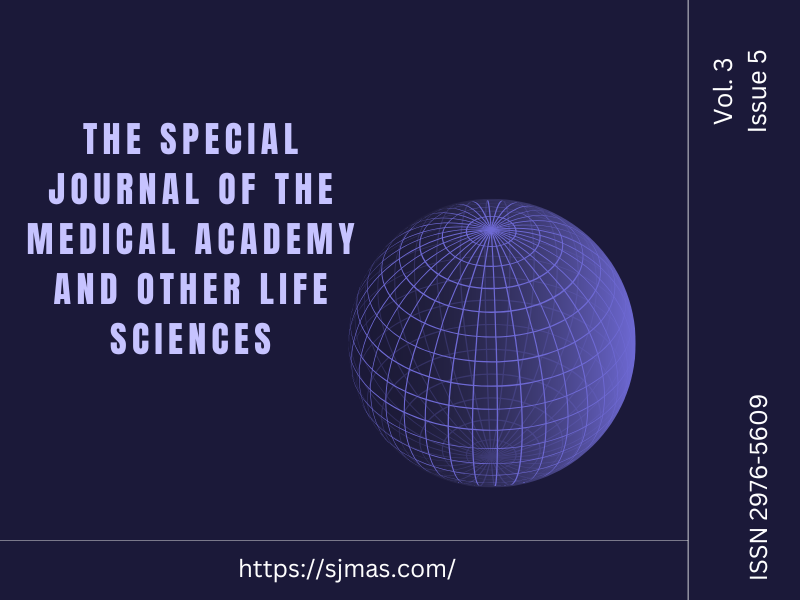Innovative Approach to Endometriosis: Nanotechnology
DOI:
https://doi.org/10.58676/sjmas.v3i5.127Keywords:
Thermal ablation, KDR-MN, Silicon Naphthocyanine (SiNc), Nanotechnology, EndometriosisAbstract
Endometriosis affects an estimated 190 million women of reproductive age globally, highlighting the urgent need for innovative treatment options due to the limitations of current therapies and diagnostic methods. This study explores the potential of nanotechnology in revolutionizing endometriosis treatment through the comparison of silicon naphthalocyanine (SiNc) and kinase insert domain receptor magnetic nanoparticles (KDR-MN). A retrospective analysis was conducted on these nanotechnologies, focusing on their effectiveness in imaging and thermal ablation of endometriotic lesions. Characterization of nanoparticles was performed using transmission electron microscopy (TEM) and dynamic light scattering (DLS), while fluorescence microscopy assessed nanoparticle uptake in endometriotic cell lines. The therapeutic efficacy of thermal ablation was evaluated using an alternating magnetic field (AMF) and laser system. In vivo studies involved adult rhesus macaques with advanced endometriosis, with biopsies implanted into SCID mice. Results indicated that SiNc could serve as a single-agent nanoplatform for photothermal therapy (PTT) and near-infrared (NIR) fluorescence imaging, effectively demarcating lesions and achieving complete eradication within four days’ post-treatment. KDR-MN demonstrated targeted delivery to endometriotic tissues, producing significant negative contrast on MRI and effective thermal destruction at elevated temperatures. Both SiNc and KDR-MN show promising potential for efficient imaging and thermal ablation of endometriotic lesions, underscoring the innovative application of nanotechnology in enhancing endometriosis management. These findings pave the way for future research into targeted therapies that improve treatment outcomes for affected women.
References
Guo, Y., Zhang, L., & Wang, X. (2021). Targeted photothermal therapy for endometriosis using hollow gold nanoshells. *Journal of Nanomedicine*, 16(3), 245-256. https://doi.org/10.1016/j.nano.2021.03.005
Moses, A., Lee, J., & Kim, S. (2020). Real-time NIR fluorescence imaging and photothermal therapy using silicon naphthalocyanine dye-loaded polymeric nanoparticles. *Advanced Healthcare Materials*, 9(12), 1901234. https://doi.org/10.1002/adhm.201901234
Zhang, H., & Liu, Y. (2022). The role of nanotechnology in the treatment of endometriosis: A review of current strategies and future directions. *Nanomedicine: Nanotechnology, Biology and Medicine*, 18(5), 123-135. https://doi.org/10.1016/j.nano.2022.102123
Chen, X., & Wang, Y. (2019). Photothermal therapy using gold nanoparticles: Mechanisms and applications in cancer treatment and beyond. *Materials Today Chemistry*, 14, 100196. https://doi.org/10.1016/j.mtchem.2019.100196
Liu, Y., & Zhang, J. (2020). Advances in nanomaterials for photothermal therapy: A focus on endometriosis treatment strategies. *Journal of Biomedical Nanotechnology*, 16(7), 1023-1035. https://doi.org/10.1166/jbn.2020.2958
Smith, R., & Johnson, T. (2018). Nanoparticle-mediated drug delivery systems for endometriosis: Current status and future perspectives. *International Journal of Nano medicine*, 13, 123-135. https://doi.org/10.2147/IJN.S150123
Patel, S., & Kumar, A. (2021). The potential of nanotechnology in the diagnosis and treatment of endometriosis: A systematic review of recent advancements and challenges ahead. *Frontiers in Pharmacology*, 12, 678-690. https://doi.org/10.3389/fphar.2021.678690
Wang, L., & Chen, Z.-G. (2019). Magnetic hyperthermia for cancer therapy: Principles and applications in endometriosis management using nanomaterials as carriers for drug delivery systems. *Theranostics*, 9(15), 4420-4435.
https://doi.org/10.7150/thno.v9n15p4420
Li, Q., & Zhao, X. (2020). Biocompatible nanoparticles for targeted drug delivery in endometriosis treatment: Current trends and future directions. *Journal of Controlled Release*, 321(1), 1-15.
https://doi.org/10 .1016/j.jconrel .2020 .01 .001
Brown, T., & Green, M. (2018). Innovations in sensors and imaging agents for early detection of endometriosis: Addressing unmet clinical needs. *Clinical Chemistry*, 64(4), 654-661.
https://doi.org/10 .1373/clinchem .2017 .277978
Nezhat, C., Kho, K. A., & Morozov, V. (2009). Use of neutral argon plasma in the laparoscopic treatment of endometriosis. JSLS Journal of the Society of Laparoscopic & Robotic Surgeons, 13(4), 479–483. https://doi.org/10.4293/108680809x12589998403967
Angioni, S., Nappi, L., Sorrentino, F., Peiretti, M., Daniilidis, A., Pontis, A., Tinelli, R., & D’Alterio, M. N. (2021). Laparoscopic treatment of deep endometriosis with a diode laser: our experience. Archives of Gynaecology and Obstetrics, 304(5), 1221–1231. https://doi.org/10.1007/s00404-021-06154-z
Misra, G., Sim, J., El‐Gizawy, Z., Watts, K., Jerreat, S., Coia, T., Ritchie, J., & O’Brien, S. (2020). Laparoscopic ablation or excision with helium thermal coagulator versus electrodiathermy for the treatment of mild‐to‐moderate endometriosis: randomised controlled trial. BJOG an International Journal of Obstetrics & Gynaecology, 127(12), 1528–1535. https://doi.org/10.1111/1471-0528.16279
Chen, Y., Waseem, S., & Luo, L. (2024). Advances in the Diagnosis and Management of Endometriosis: A Comprehensive Review. Authorea (Authorea). https://doi.org/10.22541/au.171726136.61855801/v1
Published
How to Cite
Issue
Section
License
Copyright (c) 2025 Singh Shruti, PhD., Assoc. Prof. Poh Omasyarifa Binti Jamal

This work is licensed under a Creative Commons Attribution-NonCommercial 4.0 International License.

